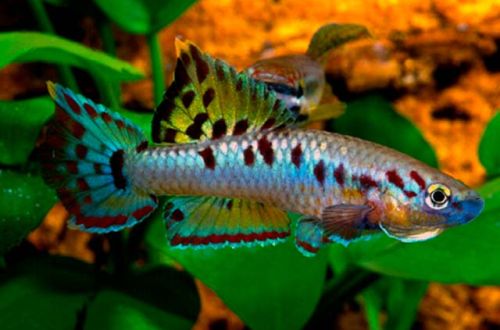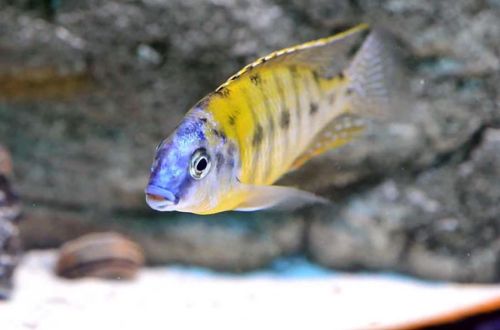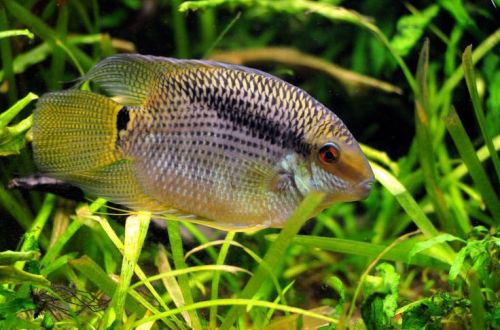
Two-banded lyrebird
The two-banded lyrebird, scientific name Aphyosemion bivittatum, belongs to the Nothobranchiidae family. The fish is native to Africa. It occurs in small river systems and streams flowing through dense equatorial forests in southeastern Nigeria and southwestern Cameroon.

Inhabits shallow swampy water bodies. The water has a rich brown hue due to the high concentration of tannins formed during the decomposition of plant organic matter (snags, branches, leaves, fruits, etc.)
Description
Adults reach a length of about 5 cm. The fish has a brightly colored body. There are several natural color forms, characterized by the predominance of turquoise, reddish, or yellow.
There may be two dark stripes in the body pattern. In some cases, instead of stripes, dotted lines of the same dark specks. Sometimes lines and stripes are missing. Dark red speckles appear irregularly on the body.
Males have large fins and a tail with pointed tips. The coloring is variegated with an ornament of lines and dots.
Behavior and Compatibility
Peaceful calm fish. In small aquariums, a pair of male and female is recommended. In spacious tanks, being in a group is acceptable. In this case, males will compete for the attention of females, but without showing aggression.
Compatible with fish of comparable size such as Nannostomus, Kuhl’s Char, Kori Catfish, Dwarf Gourami and other soft water species.
Brief information:
- The volume of the aquarium – from 40 liters.
- Temperature – 21-26°C
- Value pH — 5.0–6.5
- Water hardness – soft (5-7 dGH)
- Substrate type – any dark
- Lighting – subdued
- Brackish water – no
- Water movement – little or no
- The size of the fish is about 5 cm.
- Meals – any rich in protein
- Temperament – peaceful
- Content in a pair or group
Maintenance and care, arrangement of the aquarium
The optimal size of the aquarium for a pair of fish and several neighboring species starts from 40 liters. The design should include a large number of aquatic plants, including floating for shading, natural driftwood, bark and leaves of trees. Soil soft dark on the basis of peat.
Natural wood design elements will become sources of tannins – tannins, they will make the water look like the one in which fish live in nature.
Aquarists have observed that dark water (due to dissolved tannins) and subdued light levels promote brighter colors in fish. The opposite situation was noted in high light conditions – the fish become pale.
Basic water parameters should be low GH and acidic pH. A comfortable temperature is considered to be between 22 and 24°C.
They do not tolerate excessive movement of water in the aquarium. The reason for the internal flow is the filter. For this reason, it is recommended to purchase a model that will not cause excessive movement of water. For example, for small aquariums, a simple airlift filter is a good choice.
Food
They prefer foods rich in protein, such as dry or fresh bloodworms, daphnia, brine shrimp and other similar foods.
Sources: FishBase, Wikipedia





